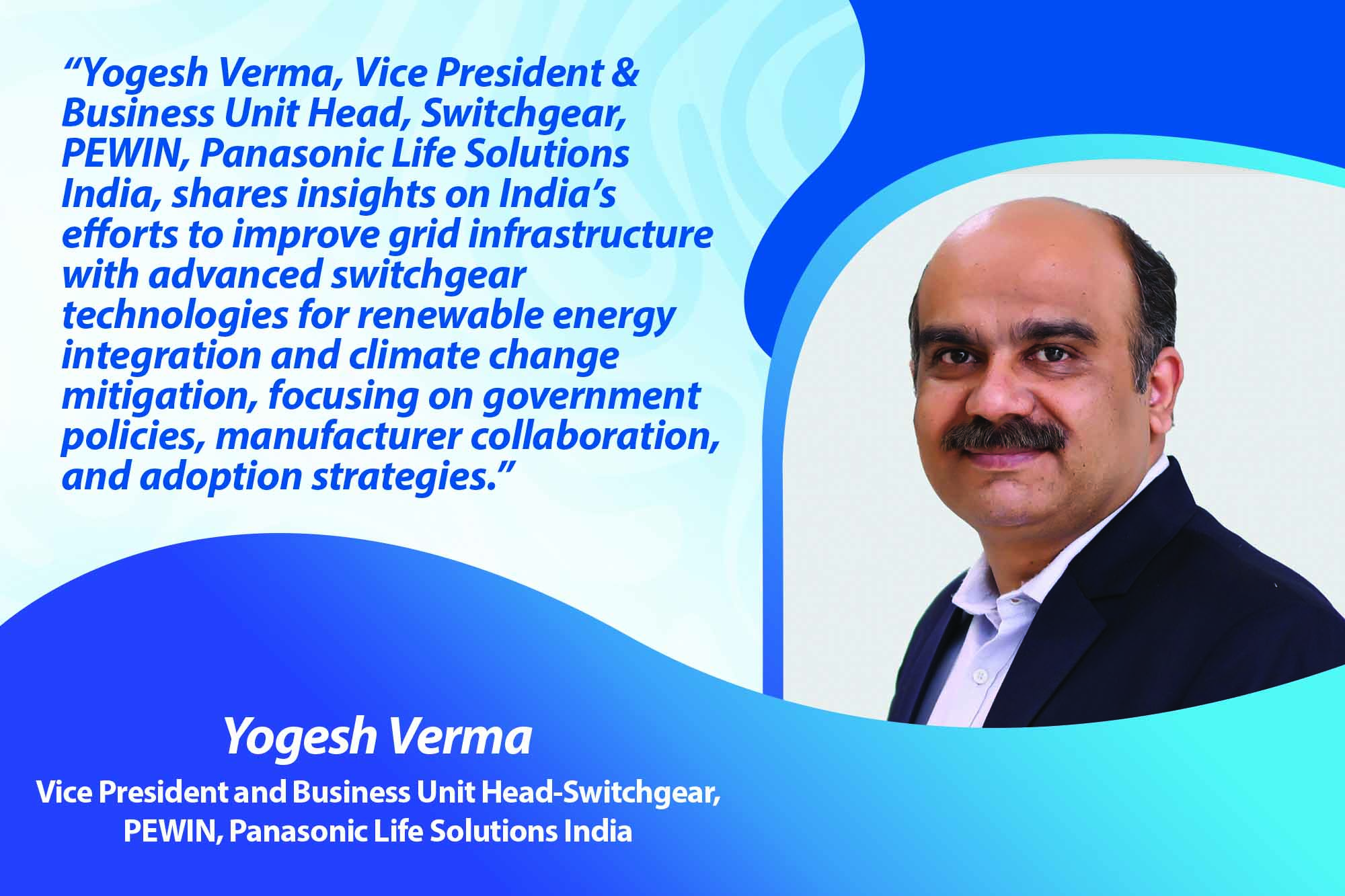The industry needs incentives to overcome barriers to adopt new technologies
By EPR Magazine Editorial June 26, 2024 1:41 pm IST
By EPR Magazine Editorial June 26, 2024 1:41 pm IST

Yogesh Verma, Vice President & Business Unit Head, Switchgear, PEWIN, Panasonic Life Solutions India shares insights on India’s efforts to improve grid infrastructure with advanced switchgear technologies for renewable energy integration and climate change mitigation, focusing on government policies, manufacturer collaboration, and adoption strategies.
Yogesh Verma, Vice President and Business Unit Head-Switchgear, PEWIN, Panasonic Life Solutions India
===========
A key player in one of the largest manufacturers of electrical construction materials (ECM), PEWIN, Panasonic Life Solutions India is dedicated to advancing green and clean energy initiatives in the country.
India is actively enhancing its grid infrastructure to integrate renewable energy sources and combat climate change. Significant investments are being made in smart grid technology, real-time monitoring, and advanced control systems. The government supports research and development in advanced switchgear technologies through substantial grants. Additionally, efforts are underway to train the workforce in maintaining and operating these advanced systems. The introduction of advanced switchgear and protection devices ensures optimal security and efficiency, safeguarding against overload, short circuits, and electrical leakage with high breaking capacity and user-friendly functionalities.
What measures is the centre taking to promote advanced switchgear technologies for grid modernisation, digitalisation, and climate change mitigation?
India is enhancing its grid infrastructure to accommodate renewable energy sources like solar power and combat climate change. Significant investments are being made in smart grid technology, real-time monitoring, and advanced control systems. The government provides substantial grants and support for R&D in advanced switchgear technologies. Additionally, efforts are underway to train the workforce in maintaining and operating these advanced systems.
Incentives are key to overcoming barriers to new technology adoption. Governments can provide financial support and subsidies for installing solar panels and solar energy cells. Funding manufacturers can drive innovation. Public awareness and education about renewable energy can also boost its widespread use.
What policies incentivise smart switchgear adoption for energy management and renewable integration?Policies such as financial incentives and grants for installations, performance standards for products, training programmes for engineers and technicians, R&D funding for innovation, and public procurement policies can promote adopting energy management and renewable integration.
How do manufacturers and the government collaborate on switchgear products’ safety, reliability, and quality?
The government and manufacturers ensure product safety, reliability, and quality through a regulatory framework, compliance design, and strict safety standards. The government sets the rules and compliance requirements, while manufacturers follow these regulations to help develop and maintain safety and quality standards.
How can the industry benefit from growing investment in renewable energy and more demand for secure electrical systems?
Growing investment in renewable energy will boost the electrical safety equipment and components market, driving demand for innovative solutions and energy conservation products. Government incentives promote renewable energy, support environmental conservation, and help to make our planet greener.
The combined efforts of Panasonic PEWIN Division, the government, and other stakeholders are leading the way in modernising India’s power sector. By investing in smart technologies, promoting renewable energy, and maintaining strict quality standards, India is paving the way for a sustainable and efficient energy future. As we continue to innovate and expand our offerings, PEWIN is committed to lighting the way to a cleaner, greener tomorrow, supporting India’s journey towards achieving net-zero emissions and a resilient energy landscape.
We use cookies to personalize your experience. By continuing to visit this website you agree to our Terms & Conditions, Privacy Policy and Cookie Policy.